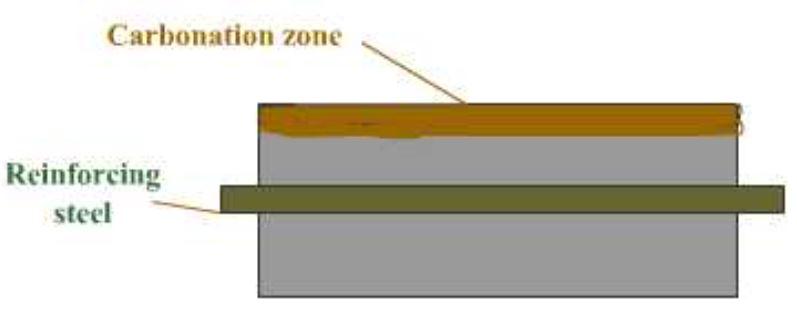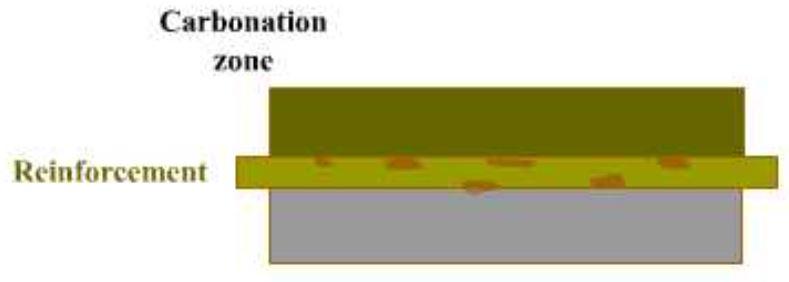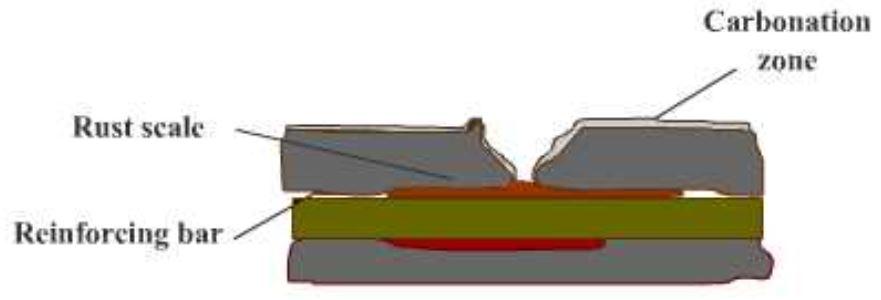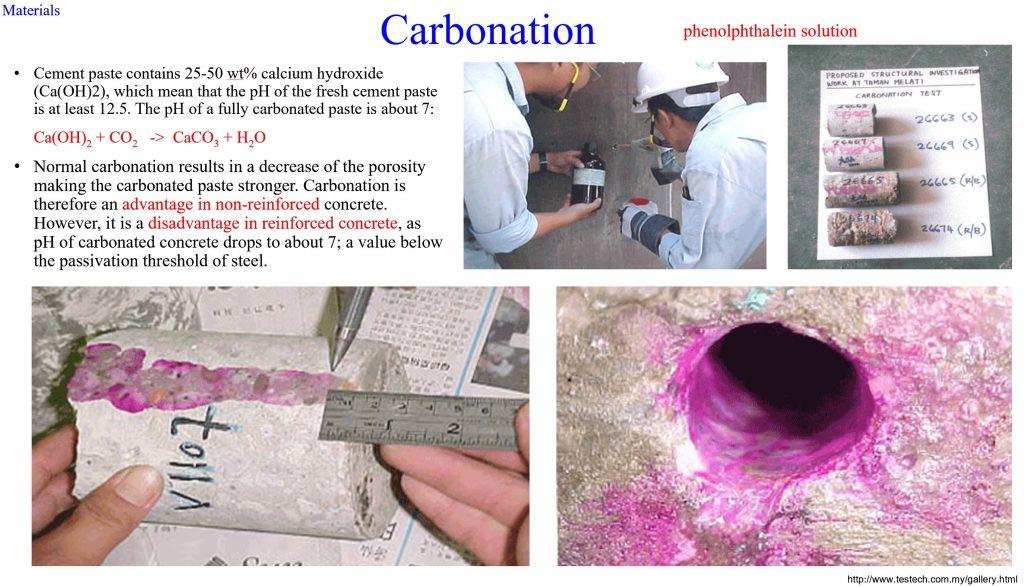Case 2
Navigation
- Introduction
- Causes of Defects
- Good Practices
- Standards
- Maintenance and Diagnostics
- Remedial
- Similar Cases
- References
Cause of Defects



- Lack of provision for concrete cover may be the possible cause for carbonation of concrete. When concrete carbonates the pH of the pore fluid drops to values where steel is no longer passive, resulting corrosion of steel reinforcement. This may result due to poor detailing of cover thickness or improper handling and placement of concrete and reinforcement at construction stage.
- Poor compaction during the construction could be another possibility for concrete carbonation.
- Chlorides or other dissolved salts present in the water will accelerate the rate of corrosion and soluble sulphates may cause sulphur attack on the concrete slab.
- The built-up stresses due to an increase in volume caused by the rusting of rebar, lead to cracks within concrete and spalling with the formation of more rust over time as shown in the figures.

- The volume increase due to rust formation can be as high as 7 times the original.



